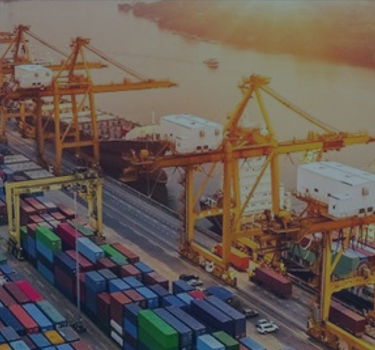What Are HS (Harmonised System) Codes?
Amongst all the industry classification systems, Harmonised System (HS) Codes are usually used for goods during exporting. The Harmonised System (HS) is an internationally followed way of classification for traded products. This system uses numbers to label goods which then allows customs officials to easily identify the product, determine the import taxes, as well as collect trade data.
As its name suggests, the International Organization for Standardization's (ISO) main purpose is to identify global standards. With so many things moving across borders, it's essential to be able to tell them apart and ensure compatibility. By accurately placing tariffs on products, customs officials can prevent excessive expenses and keep the trade process running smoothly.
The HS code system was established in the 1980s by the World Customs Organisation (WCO) in order to classify goods on a global scale. The codes are updated twice yearly, with a more significant review every five years to take into account new technologies and trends. 211 countries – including the EU - use this system.
Why Do HS Numbers Change? A Background
The World Customs Organization (WCO) reviews the Harmonized Commodity Description and Coding System every five years. Also known as just the Harmonized System(HS), these HS codes are what tariffs for more than 200 economies and countries worldwide are based off of.
The WCO constantly analyses HS numbers to make sure they are up-to-date with changes in technology, gives new insight into different types of products, and reflects on any international issues as they develop.
HS 2022, which went into effect on 1st January 2022, is the seventh edition. In 2017, the WCO adopted 351 sets of amendments over a 3-year period to guarantee higher standards for an extensive variety of products and product categories.
How To Identify An HS Code?
The HS code is a six-digit identifier used to represent a particular good being imported or exported. This coding system consists of three parts: Chapter, Heading, and Sub-heading, which work together to describe the good in question.
An example of a company shipping vehicles' rear-view mirrors:
- "Chapter" is what you would call the HS code's first two digits. The Chapter is a broad categorization of your product that tells you what it is generally used for. In our example, the product would be classified under Chapter 70- glassware and glass.
- The next two digits are the Heading, which gives us another level of distinction. In this example, we would need glass mirrors (09) sub-heading.
- The final two digits, called the sub-heading, provide extra clarification. In our glass example, there is a vehicle rear-view mirror-specific sub-heading (10), which adds two digits.
The HS code is a combination of different aspects, in this instance, it's 7009.10. If a sub-heading isn't important, then 00 will be the last two digits.
Changes to HS Codes Since 2022
The system will be updated in 2022. What does that mean for you and your business?
HS numbers are undergoing a version update on 1st January 2022, to HS 2022 classification. In this article, we will go over the changes and how exporters can remain updated on classifying their products.
The World Customs Organization is set to release HS 2022, which will include 351 amendments to the Harmonized System. These changes will affect a multitude of commodities that are shipped internationally. The primary objectives of the HS 2022 amendments are to adjust to current trade by adding new product categories and addressing global environmental and social issues.
Some of the most significant changes are as follows:
- New products, including tobacco and drone products.
- Health and safety products, from clinical trials to placebos and diagnostic kits.
- Technological advances in machines for metal and glass fiber formations
- Security Equipment for Humans, like Lab equipment and toxins.
- Products To Protect Society like Detonators, Radioactive materials, etc.
Why Is It Important To Know Product Classification?
By misclassifying your products, you run the risk of committing fraud and being subjected to fines. You may also be placed on a watchlist, which would make it more difficult to ship goods internationally in the future.
To avoid any potential issues, it's essential to keep up-to-date with the latest HS code changes and ensure that your products are correctly classified. You can do this by subscribing to a classification service or working with a customs broker who will have the most current information.
What Happens If You Don't Update Your HS Codes?
If you don't update your codes, you could be subject to penalties, including:
- Audits: Customs authorities may audit your shipments to check for compliance. If they find that you've been misclassifying your products, you could be subject to additional penalties.
- Watchlists: You could be placed on a watchlist, which would make it more difficult to ship goods internationally in the future.
- Fines: You could be fined for misclassifying your products. The amount of the fine will depend on the country where you're shipping and the type of product being shipped.
It's essential to stay up-to-date with the latest HS code changes to avoid any potential issues. You can do this by subscribing to a classification service or working with a customs broker who will have the most current information.


 Back to Blogs
Back to Blogs